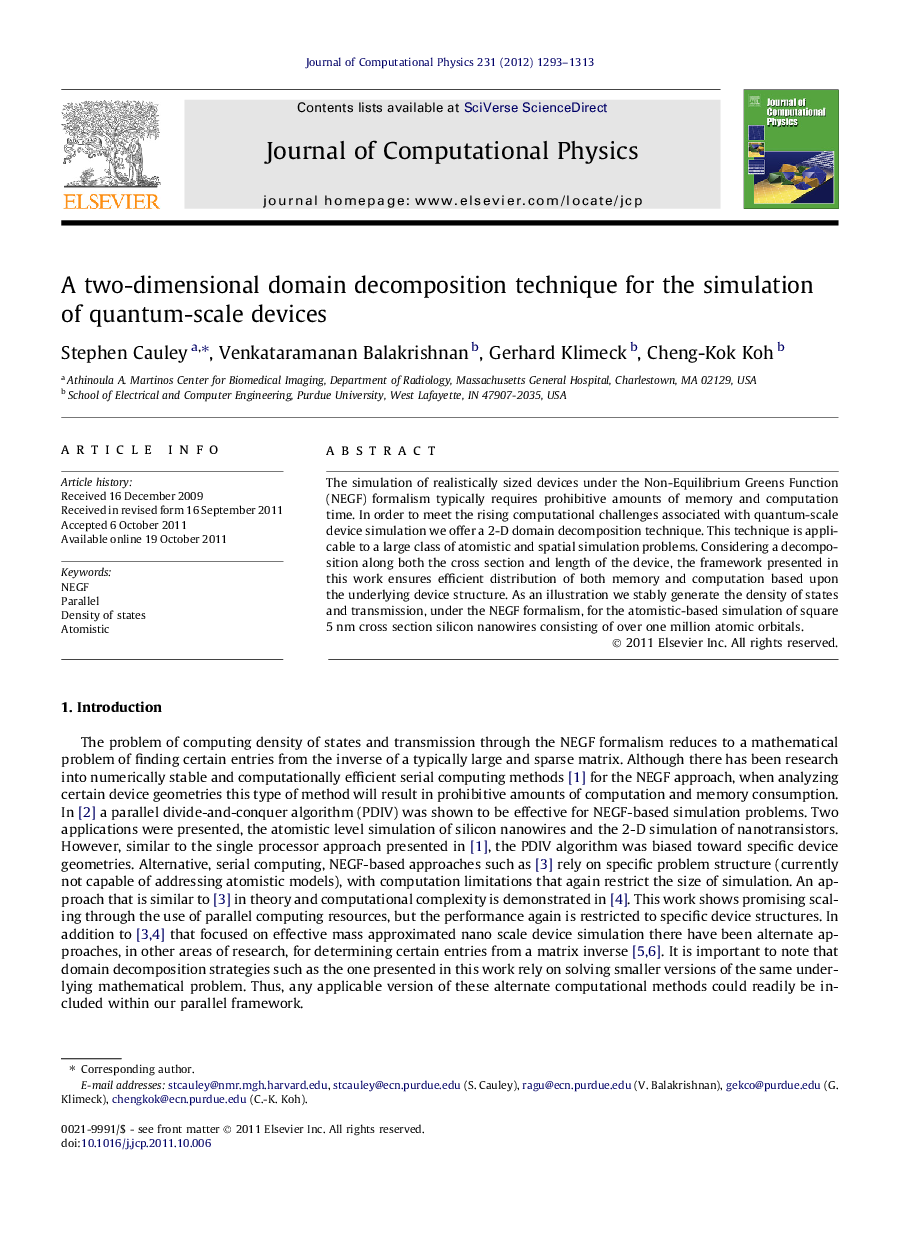| Article ID | Journal | Published Year | Pages | File Type |
|---|---|---|---|---|
| 519127 | Journal of Computational Physics | 2012 | 21 Pages |
The simulation of realistically sized devices under the Non-Equilibrium Greens Function (NEGF) formalism typically requires prohibitive amounts of memory and computation time. In order to meet the rising computational challenges associated with quantum-scale device simulation we offer a 2-D domain decomposition technique. This technique is applicable to a large class of atomistic and spatial simulation problems. Considering a decomposition along both the cross section and length of the device, the framework presented in this work ensures efficient distribution of both memory and computation based upon the underlying device structure. As an illustration we stably generate the density of states and transmission, under the NEGF formalism, for the atomistic-based simulation of square 5 nm cross section silicon nanowires consisting of over one million atomic orbitals.
